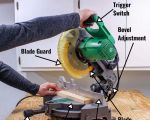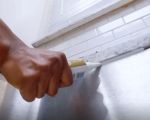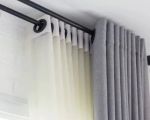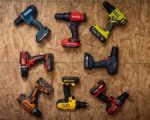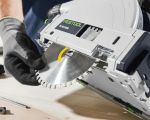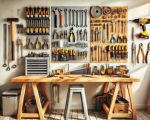Using a Stud Finder the Right Way
As a DIY enthusiast, I’ve learned the importance of using the right tools in the right way. One of the most valuable tools in my toolkit for home improvement projects is a stud finder. Whether you're installing a shelf, mounting a TV, or hanging a heavy picture frame, finding the studs in your walls is crucial to ensure that your items are secure. In this article, I'll share my experience and insights into using a stud finder the right way, so you can achieve the best results without any frustrations.
1. Understanding the Basics of a Stud Finder
First things first, let’s start with the basics. A stud finder is a simple tool that helps locate the wooden or metal studs behind your wall. These studs are the vertical framing members of your wall, and they provide the support needed to secure heavy objects like shelves or TVs.
There are two main types of stud finders: magnetic stud finders and electronic stud finders. Magnetic stud finders work by detecting the metal nails or screws that hold the drywall to the studs. They are inexpensive and easy to use, but they may not be as accurate, especially in drywall that doesn’t have many nails or screws. Electronic stud finders, on the other hand, use sensors to detect changes in the density of the wall, indicating the presence of a stud. They are generally more accurate but come at a higher price point.
2. Choosing the Right Stud Finder for Your Needs
Not all stud finders are created equal, so choosing the right one for your needs is crucial. If you’re a beginner or only need a stud finder for occasional use, a simple magnetic stud finder might be sufficient. However, if you plan to tackle more complex projects or need better accuracy, investing in an electronic stud finder might be worthwhile.
Some of the best options on the market include the Zircon StudSensor, the Franklin Sensors ProSensor, and the Bosch Digital Stud Finder. These electronic models provide accurate readings and can detect both wood and metal studs, making them versatile tools for any home improvement project. They also feature features like deep scanning modes, which can help detect studs behind thick walls.
3. How to Use a Magnetic Stud Finder
Using a magnetic stud finder is straightforward, and it’s an excellent choice for beginners. Start by holding the stud finder flat against the wall. Slowly move it across the surface, and when it detects metal, the tool will either stick to the wall or give a visual or audible cue. As you move the tool across the wall, it will beep or the magnet will stick to the stud, indicating its location.
Once you’ve found one stud, mark its location with a pencil. Move the stud finder to the left or right of the first stud, keeping it aligned with the wall. You’ll soon find the adjacent stud. Make sure to mark both the left and right edges of the stud to ensure accuracy before drilling. Magnetic stud finders are generally easy to use but may require a bit more patience and trial and error, especially when dealing with drywall that doesn’t have visible nails or screws.
4. How to Use an Electronic Stud Finder
Electronic stud finders offer more advanced features and tend to be more accurate. To use one, first calibrate the device. This involves holding the stud finder flat against the wall and pressing the button to reset it. Calibrating ensures that the tool detects changes in wall density rather than false readings. Once calibrated, slowly move the device horizontally along the wall.
As you approach a stud, the stud finder will emit a sound or light to indicate its presence. Some models can even detect the depth of the stud, making it easier to locate the center for precise drilling. Once you’ve identified a stud, mark both sides with a pencil, so you know exactly where to make your holes.
5. Common Issues with Stud Finders and How to Avoid Them
While stud finders are incredibly useful, they can sometimes give inaccurate readings, especially if the wall is irregular or the device isn’t used properly. One of the most common issues is false positives, where the stud finder detects a stud that isn’t actually there.
To avoid this, always make sure to calibrate your electronic stud finder before each use. Also, check for nearby wires or pipes, as some stud finders can detect these as well. If you're using a magnetic stud finder, be aware that the tool may pick up nails or screws that are not part of the stud framing, leading to inaccurate results.
6. Tips for Finding Studs Behind Different Wall Types
The type of wall you’re working with can affect how accurately a stud finder works. For example, drywall and plaster walls have different densities, which can impact the tool’s performance. If you’re working with plaster walls, you may need a more advanced electronic stud finder that can detect deeper studs.
In addition, walls with thicker drywall or a double layer of plaster may require the use of a stud finder with a deeper scan mode. Some stud finders allow you to adjust the depth of the scan, which is perfect for these types of walls. If you have trouble finding studs on particularly thick walls, try scanning in different directions to ensure you're covering all possible stud locations.
7. Other Uses for a Stud Finder
While stud finders are primarily used for locating studs, they can also help in other ways. For example, some stud finders can detect live wires and metal pipes, making them useful for avoiding damage during drilling. This feature is especially important when working with walls that have electrical wiring or plumbing behind them.
Additionally, stud finders can be used to locate other structural elements, such as beams, joists, or rafters. This can be especially useful if you're installing large, heavy items that need to be anchored into the wall securely, such as bookshelves or televisions.
8. Conclusion: Mastering the Use of a Stud Finder
Using a stud finder the right way is essential for ensuring that your home improvement projects are safe and successful. Whether you’re using a magnetic stud finder for simple tasks or an electronic one for more advanced projects, knowing how to properly use the tool will help you find studs quickly and accurately. Be sure to calibrate your device, avoid common pitfalls, and take into account the type of wall you’re working with.
If you’re serious about DIY projects, investing in a high-quality stud finder will save you time and frustration. Don’t forget to check out the wide range of stud finders available on [ToolNest] to find the perfect tool for your needs. Happy building!
<> SEO Title: How to Use a Stud Finder the Right Way SEO Keywords: stud finder, best stud finders, how to use stud finder, stud finder tips, DIY stud finder use SEO Description: Learn how to use a stud finder the right way with these simple tips. Find studs accurately and safely for your next home improvement project.

